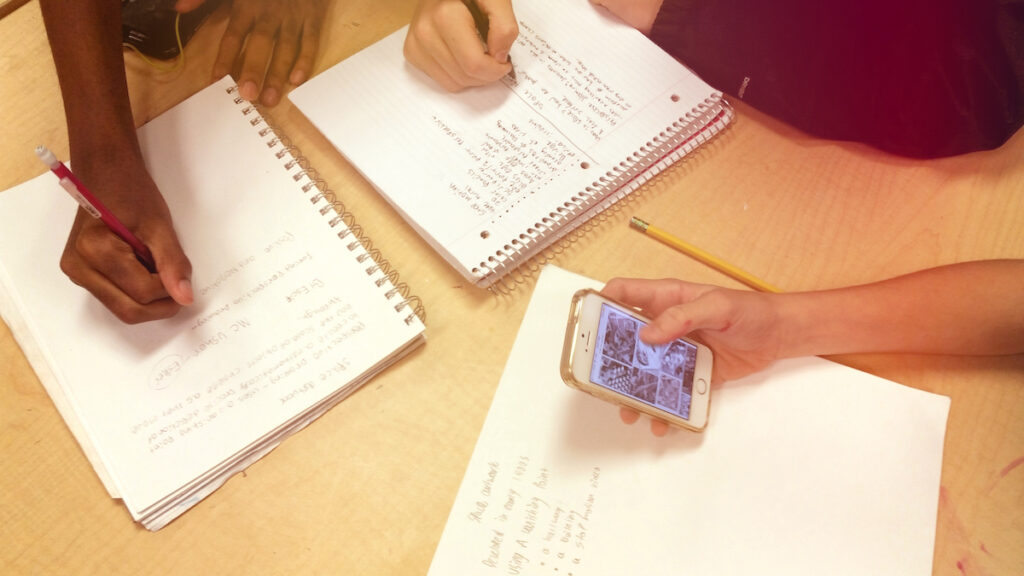Creative thinking is an essential skill for successful art students to develop. It’s also a very teachable one if you approach it in the right way. Concept development is a way to start challenging your kids to think outside the box. It is both integral to the final product and also a common place students get stuck. All too often students rush to come up with an idea that will meet the criteria of the assignment and stop there.
Here are three tips to encourage students to examine multiple possibilities.

1. Active Note Taking
I love it when my high school students doodle while I’m talking. When I introduce a new project, I actually encourage doodling, though I also accept ideas in written form. I always share a few different examples of ways to approach a theme or topic. As I discuss them, I ask students to sketch ideas or take notes. This way, when I’m done with my introduction, each student has multiple ideas recorded. You might even want to teach visual note taking as a specific strategy students can use.
2. Group Brainstorming
The power of group thinking is one of my favorite teaching strategies. One of the best ways to use it is in the idea generation phase of projects. I do it this way: after an assignment is introduced, I put kids in groups and give them five minutes to come up with 20 ideas. I encourage them to write down everything they think of. In fact, I sometimes have them focus on ideas that could never really work. After lists are made and time is up, each group shares with the class. This really gets students thinking because they are exposed to so many different points of view.

3. Questioning
As students develop ideas for artwork, I make sure to talk to them as much as possible. I encourage them to consider multiple solutions by asking guiding questions. Often, I’ll run into the issue of students who are considering trite imagery. It’s important to address this in a way that points out the issue in a positive and helpful way. I might say, “I notice your image is something I’ve seen before. What do you like about this image?” From there, we can work together to examine other avenues for expression.
Of course, the characteristics of the assignments can make or break your attempts at encouraging kids to think creatively. To prompt exciting ideas, your assignments need to be open to multiple interpretations and not tied to trite, overdone imagery. Working with themes is one way to accomplish this. I like to use words that have more than one interpretation to get my students thinking.
In the end, not matter how you do it, it’s essential to plan lessons requiring our kids to think and generate multiple solutions. This teaches creative thinking, a skill that will serve students well no matter what career path they follow.
How do you get students to think beyond their first ideas?
Do you have any other tips to share?
Magazine articles and podcasts are opinions of professional education contributors and do not necessarily represent the position of the Art of Education University (AOEU) or its academic offerings. Contributors use terms in the way they are most often talked about in the scope of their educational experiences.





